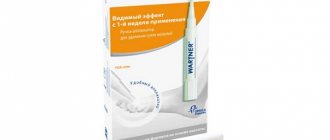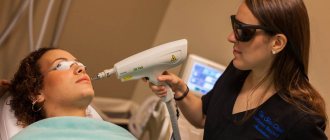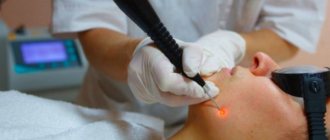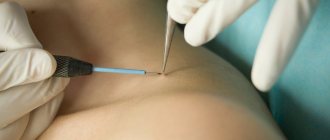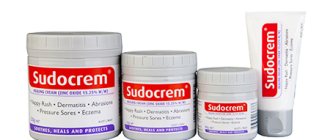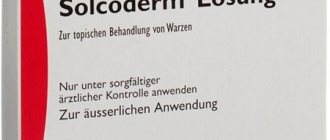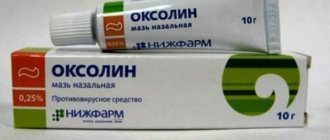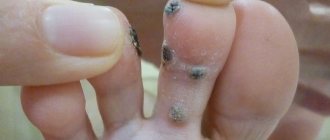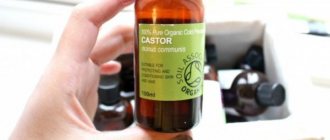Characteristics of the disease
To understand how realistic it is to get rid of papillomas at home, it is advisable to understand the information regarding this pathology.
Medical statistics claim that about 80% of the adult population have at least once encountered a manifestation of the human papillomavirus.
The papillomavirus, which causes the appearance of growths, has been known for a very long time. To date, about 600 types of papillomavirus have been discovered. People of different age categories, men, women and children, are susceptible to the disease.
Genital warts, which often cause cancer, are especially dangerous.
Papilloma is a benign neoplasm caused by the human papillomavirus (HPV). These growths have the appearance of a papillary neoplasm protruding above the surrounding tissue.
Papilloma is a benign neoplasm caused by HPV
Places where papillomas often appear:
- oral mucosa,
- nose,
- pharynx,
- neck,
- face,
- bladder,
- limbs,
- Cervix.
What iodine-containing drugs can be used for papillomas?
Papillomas can be removed not only with iodine in its pure form, but also with medications based on this substance. Various iodine-containing tinctures, solutions, ointments and even patches are effective in the fight against neoplasms, the main types of which are presented in the table:
| Name | Description |
| "Iodinol" | A slightly toxic pharmaceutical product that has antiseptic and bactericidal properties. |
| Lugol's solution | A medication based on molecular iodine is used for infectious and inflammatory diseases. The solution is popular for its antiseptic, methane-irritating and antifungal properties. |
| "Povidone-iodine" | Disinfectant, antiseptic drug with a wide spectrum of antimicrobial action. Available in the form of a suppository, it has a longer lasting effect than an iodine solution. |
| "Iodonate" | An iodine-based medicine with a pronounced bactericidal effect. Before use, the drug is diluted with purified water. |
| Iodine tincture | An effective antiseptic with which you can quickly get rid of pathogenic microorganisms that pose a danger to the affected area of the epidermis. It is worth remembering that the use of iodine tincture should be dosed, since excessive use of this substance can lead to skin irritation. |
Types of papillomas
In medicine, there are about 600 types of papillomas, the most common are the following 5:
- Simple papillomas. Appear in the area of the upper extremities. Most often affects children and adolescents. Without treatment, papillomas exist for decades, sometimes disappearing for no apparent reason.
- Flat. Areas of distribution: neck, face, upper limbs.
- Plantar. The foot is affected. Plantar papillomas are very painful.
- Thread-like. They occur more often in older people. Locations: neck, armpits. The skin around the eyes is often affected.
- Pointed. They have another name - condylomas. They affect the genitals and carry the risk of cancer.
Cauterization with iodine
Modern medicine allows treating papillomas with antiseptics at home. One of the drugs in this group is iodine.
Numerous reviews and medical observations show that curing small papillomas is possible in a short time (1-2 weeks). The method of cauterizing papillomas with iodine is attractive due to the low price of the drug, which is important for the patient.
Iodine removes small papillomas within 1-2 weeks
When papillomas are cauterized with iodine, the growths are burned and fall off.
Features of the procedure
In order not to harm the body when treating with iodine, you should consider:
- Iodine is effective in removing papillomas if this happens after consulting a doctor and under his strict supervision.
- It is necessary to be very careful with the healthy areas of the skin surrounding the papilloma, as desquamation of the epithelium occurs, which is highly undesirable.
- For a quick effect of getting rid of growths, frequent and regular cauterization procedures with iodine (3-4 times a day) are necessary, otherwise the results will be delayed.
- You cannot cauterize large papillomas; this will not lead to getting rid of them.
How to Lubricate
- Iodine or preparations containing iodine are not recommended to be mixed with water.
- Before the procedure, it is advisable to take a shower or hold the affected area in water to steam the skin.
- For cauterization, you need a cotton swab soaked in iodine, which is applied to the top of the growth and left for 30 seconds.
- Sometimes patients stick the moistened cotton wool to the papilloma with an adhesive plaster for greater effect. This cannot be done.
- If the papilloma is of the filamentous type, lubricate the stem of the growth, not the tip.
The bactericidal effect lasts about 30 seconds.
The effect of iodine on papillomas
The drug belongs to the group of antiseptic medications that are used to eliminate small benign neoplasms . The tincture is made by dissolving potassium iodide and iodine crystals in water and alcohol.
Photo 1: Pharmaceutical iodine is a bactericidal, fungicidal and bacteriostatic agent that helps suppress the activity of viruses and fungi. Ethanol enhances its antimicrobial effect. As a result of repeated use of iodine, papillomas dry out and fall off. Source: flickr (Lezhneva).
The ethyl alcohol in the preparation makes the product not only evaporate quickly, but also capable of burning healthy areas of the skin.
Water-based iodine preparations are considered less aggressive, but just as effective as regular iodine.:
- iodinol;
- povidone-iodine;
- iodonate;
- Lugol's solution.
The methods for using them to destroy growths are the same as for the alcohol analogue.
It is important! Before using iodine tincture to get rid of papilloma, you need to make sure that the neoplasm is benign by visiting a dermatologist and undergoing the necessary examination.
Contraindications
When removing papillomas harmlessly, there are pitfalls, ignoring which leads to undesirable results.
First you need to make sure that the disease (at this stage) has nothing to do with cancer. Otherwise, such procedures can accelerate the progression of a terrible disease.
It is important to make sure that growths on the body have nothing to do with cancer!
Contraindications are also the presence of:
- Hypersensitivity to drugs containing iodine. If, when treating growths, redness, itching, and swelling of the skin in the area of the papilloma appear, there is reason to talk about an allergic reaction of the body and stop treatment.
- Liver diseases
- Diseases of the genitourinary system
- Thyroid pathologies
- Periods of pregnancy and lactation
The use of procedures for children under one year of age is not recommended.
How to care for the wound after papilloma removal
The wound after removal of the papilloma is a funnel-shaped depression, which corresponds in diameter and depth to the eliminated skin formation.
Swelling and redness of the surrounding skin is likely for 24 hours after surgery. For the formation of a scab, constant ventilation of the wound is necessary. Fresh air dries the lymphatic fluid protruding to the surface, which coagulates and forms first a film and then a crust. Under this crust, epithelization of the wound occurs, so it can be called a “biological dressing.”
After removal of papillomas, it is impossible to allow damage to the integrity or premature removal of the crust, as this provokes severe bleeding, the formation of scars and age spots, as well as infection of a fresh wound. It is strictly forbidden to peel off the crust or unrejected papilloma tissue yourself.
It should be borne in mind that the detachment of the scab can be caused by its softening or, on the contrary, overdrying.
Based on this, you should temporarily not wet the wound or apply ointments, creams and other cosmetics to it. In addition, you should limit your exposure to ultraviolet radiation as much as possible. If the wound does become infected after removal of the papilloma, and purulent contents begin to accumulate under the scab, then the crust must be removed under medical supervision.
To do this, it is thoroughly soaked in furacillin or a solution of hydrogen peroxide and, after softening, carefully lifted by the separated part. The scab is peeled off without applying excessive force and trimmed with sterile scissors so that its fixed part remains in place. During the normal recovery process, after the crust comes off, thin skin remains, which has a bright pink tint.
Expert opinion
Sakania Luiza Ruslanovna
Dermatovenerologist, cosmetologist, trichologist
Ask a Question
After several months, the difference in color smoothes out, and the operated area ceases to differ from the surrounding tissue. The newly formed skin after removal of papillomas cannot be treated with alcohol lotions, scrubs and irritating ointments.
Avoid contact with household chemicals and any chemically active substances. During hygienic procedures, care should be taken - do not rub young skin with a washcloth or pumice stone, and do not use a razor in the operated area.
The use of foundation and other decorative cosmetics is not recommended if a papilloma has been removed from the face. At the same time, it is necessary to lubricate the skin with sunscreen, since it is very sensitive to solar radiation, prone to burns and increased pigmentation.
Treatment with blue iodine
Treatment of papillomas with blue iodine has a long history of practice and a good reputation.
Blue iodine is used internally and to lubricate growths.
Medicine recipe
- Take 1 tbsp. a spoonful of starch, diluted in 50 ml of water at room temperature.
- Add citric acid (at the tip of a teaspoon).
- Boiled water (150 ml) is poured, stirring, into the dissolved starch.
- When the solution has cooled, add a teaspoon of 5% iodine tincture.
The resulting medicine is taken to prevent gastrointestinal diseases and treat human papillomavirus infection. Taken once a day for a month, regardless of meals. In this case, applications are carried out on the affected areas of the skin. The beneficial effect of blue iodine on the gastrointestinal tract helps the body more actively fight against high-risk infections.
It is advisable to take immunostimulants.
After a course of treatment with blue iodine, a strong relief occurs, which patients take as a complete cure of the disease. This is an erroneous opinion: in unfavorable situations, relapses of the pathology are observed.
Treatment of papillomas with blue iodine has proven itself perfectly!
Operating principle
For a single growth, cauterization of condylomas with iodine is a cost-effective and effective method.
For a single growth, cauterization of condylomas with iodine is a cost-effective and effective method, since it quickly destroys cells affected by the virus. Burning out papillomas can damage healthy tissue, so you should first protect the skin around the formation. Located on open areas of the body, growths look unsightly, spoiling the aesthetics of the appearance. Condylomas grow on the male and female genital organs. For these cases, treatment of condylomas with iodine is effective. The iodine solution, due to its properties, promotes the coagulation of tissue proteins of pathological growths on the skin and mucous membrane. Treatment with iodine helps fight tumors and has helped many.
Why do papillomas appear?
The appearance of papillomas occurs for no apparent reason. Various areas of the body are affected. HPV, which causes the disease, is a dangerous enemy, from which it is difficult to protect yourself. The underlying virus is introduced in most cases during childhood.
HPV infection occurs through transmission from a carrier during household contacts:
- Through general hygiene items (combs, manicure sets, washcloths),
- In public places (gym, library, swimming pool, beauty salon, sauna).
If there are no wounds or cracks on the skin, it will be almost impossible for the papillomavirus to penetrate the body. Often, even if the virus has entered the tissue, it does not manifest itself.
The latent state can last for a very long time until conditions favorable for HPV activation are created. When immunity decreases due to various diseases, stress, and poor nutrition, antibodies in the body are not produced in the required quantities, which means they are unable to contain the virus.
Hormonal imbalance also causes activation of HPV, this happens;
- in adolescence,
- during pregnancy,
- during lactation,
- during the onset of menopause.
Papilloma is transmitted through sexual relations, often causing serious gynecological diseases that can lead to cancer.
Papilloma is transmitted through sexual contact!
How to overcome the disease
To date, attempts to defeat HPV have been unsuccessful. Antiviral therapy is aimed at temporarily suppressing the virus that has entered the body. The treatment used is symptomatic. Doctors are fighting the consequences of HPV infection by removing papillomas.
HPV treatment combines 3 components:
- Cauterization of lesions.
- Immunological therapy.
- Strengthening the body's defenses as part of a healthy lifestyle, increasing the culture of sexual life.

